

- WINTER 2024:
- Benefits
Accommodations
Report objectives
The objective of this report is to provide a broad view of our current metrics
for our accommodation program and to provide an overview of the current environment surrounding accommodation and ADA claim administration. Our compliance and data analytics teams collaborated to configure accommodation claim data into a Sedgwick “state of the line” report intended to compare and contrast our trends with other relevant industry trends.
data parameters
Data is based on the calendar year, January through December, for each reporting year.
Key observations
During the first two years of the pandemic, many employees began working from home. Accommodation rates decreased in 2020 and remained low in 2021 due to the decreased need for at-work accommodations. The accommodation incident rate increased by 11.3% in 2022 as employees started to return to offices. In 2023, accommodation incident rates started to stabilize with a decrease noted (from 5.4% to 5.3%) as more employers moved back to a hybrid work environment.
73% of accommodation requests in 2023 were for leave-only, compared to 74% in 2022 and 67% in 2021. The rise in leave-only accommodation is twofold: a greater work-from-home population required fewer at- work accommodations and the “great resignation” led to an increase in requests for leave as an accommodation.

Environmental modifications were flat from 2022 to 2023, representing 6% of all accommodation types; however, this is expected to grow in 2024 as more companies mandate a return to office and employees must request an accommodation to work from home.
Intermittent leaves of absence increased from 15.6 days per request in 2022 to 16.6 days in 2023. Intermittent leaves were certified for 40 more days on average; however, employees only took one extra day over 2022.
Employees who have one to three years of service accounted for 33% of accommodation requests in 2023 — up from 29% in 2022. In previous years, it was noted that the employees with less than one year of service were responsible for an increase in accommodation requests. As the realignment of the workforce has stabilized from the “great resignation,” employees with less than one year of service account for 3% less of the total volumes in 2023 than in 2022.
Accommodations are granted at a high rate — 93% in 2023 compared to 90% in 2022. The increase in accommodation requests occurred on both leave of absence and at work accommodations.
New volumes
The accommodation incident rate remained flat in 2023 — coming in at 5.3% in 2023 compared to 5.4% in 2022. There are dramatic shifts by industry, with finance, healthcare, manufacturing and wholesale all decreasing by over 10%, while retail increased by almost 20%.
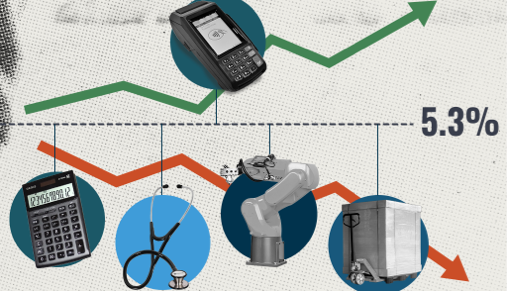
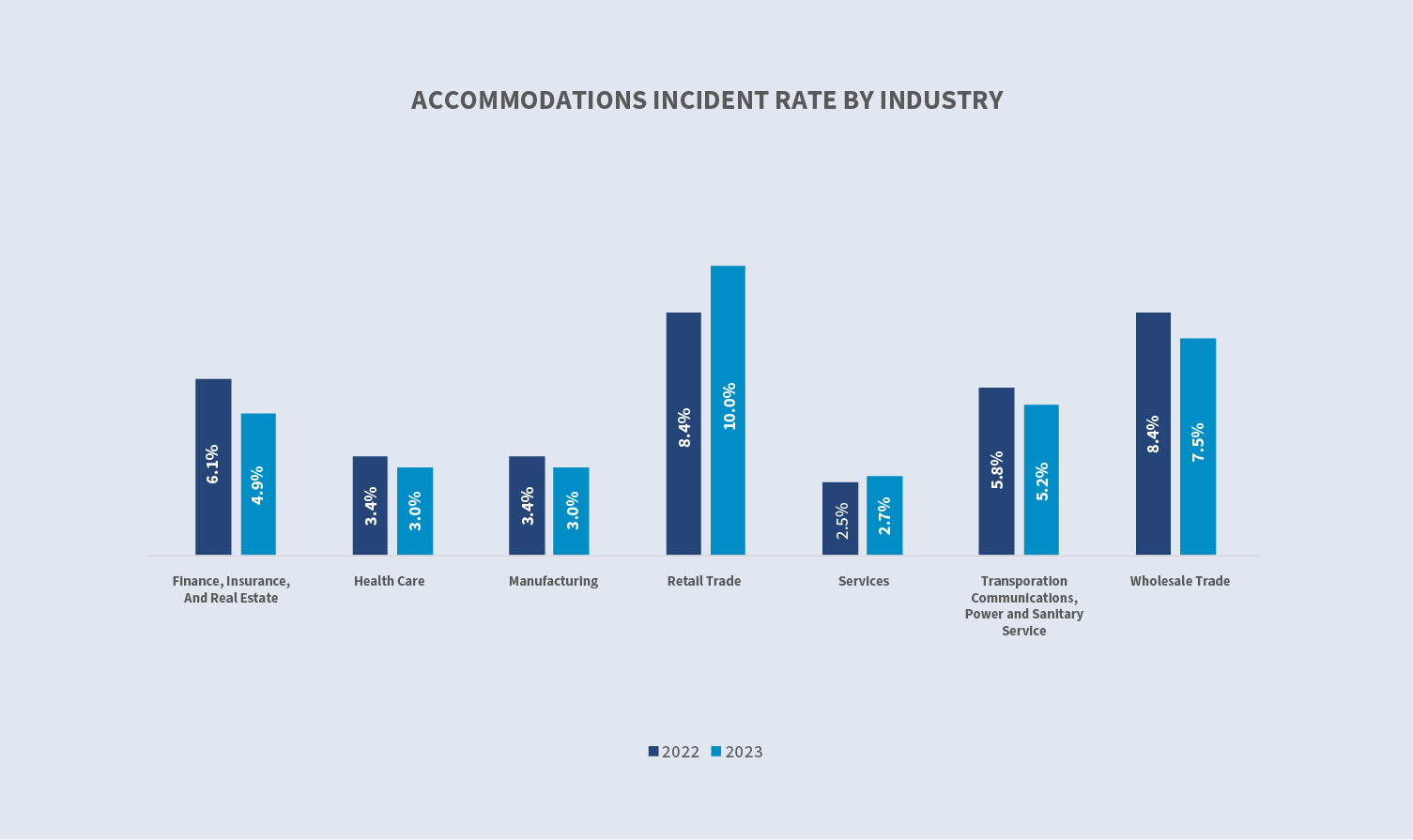
Accommodation requests by type
Over the past three years, there has been a seismic shift in the types of accommodation requests. In 2020, 39% of accommodation requests were at-work accommodations and 57% were for a leave of absence. In 2023, the at-work accommodations decreased to 27% while leave of absence increased to 70% of accommodation requests.

Work schedule requests decreased in 2023, while environmental requests increased to 19% in 2022 and remained unchanged in 2023. Most environmental modifications were accommodation requests to work from home. Change in job function requests slightly increased in 2023.
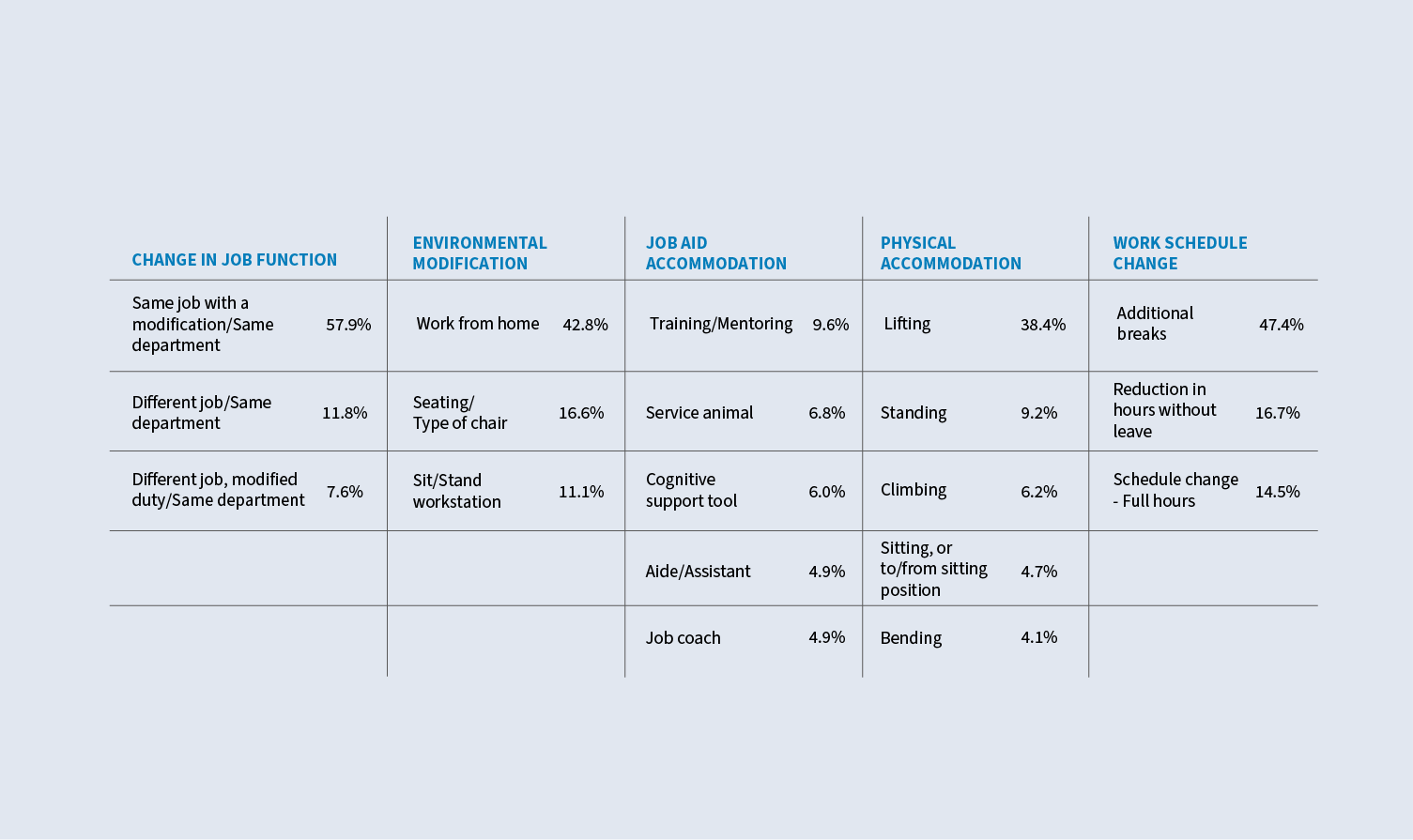
Granted rate
Accommodation requests continue to be granted at a high rate — with 93% of requests accommodated in 2023. This is a decline from approval rates in 2021 but an increase from approval rates in 2022. While both at-work and leave of absence requests were granted at a higher rate in 2023 compared to 2022, leave of absence accommodations remain low compared to 2021.
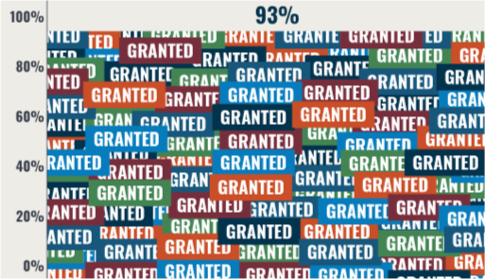
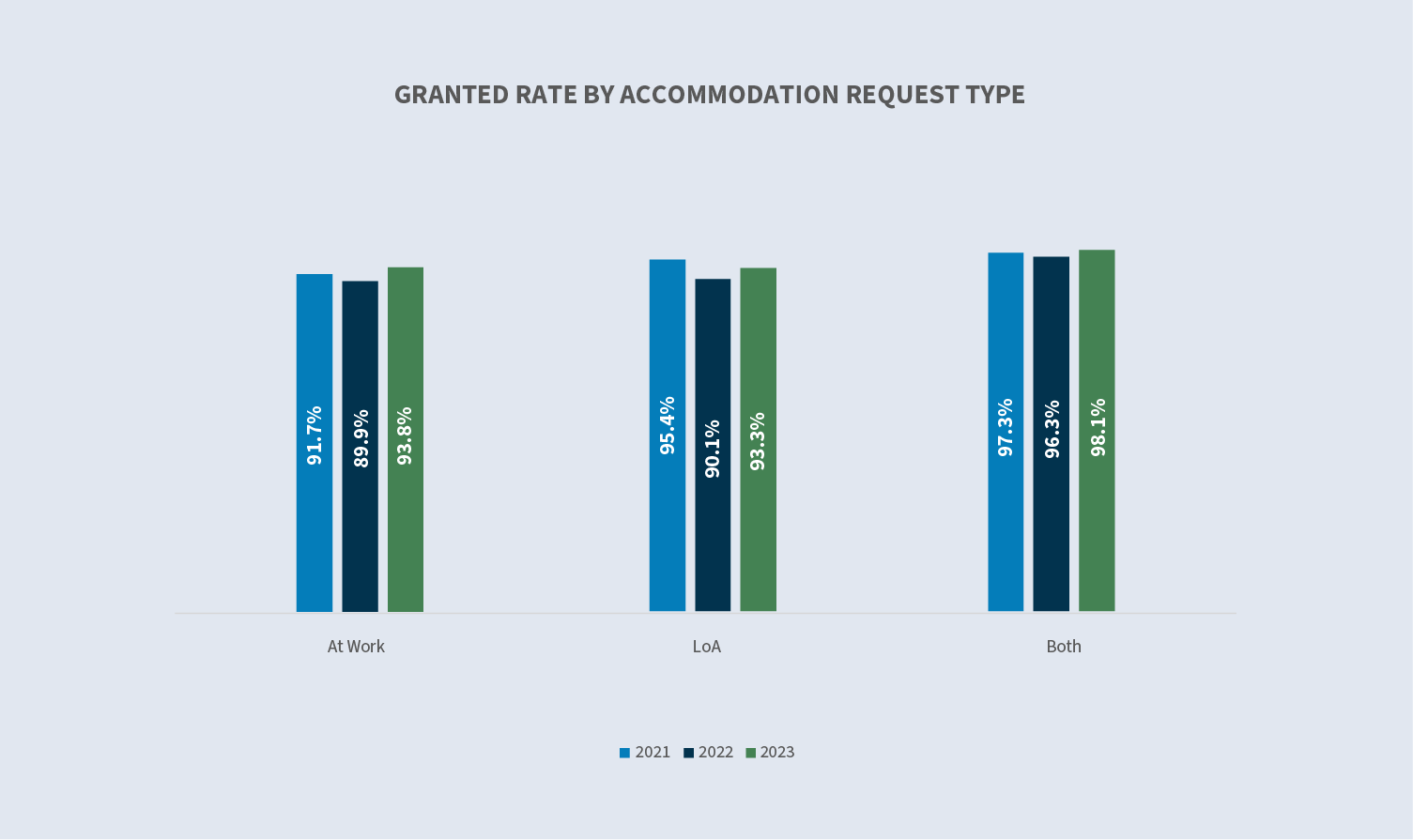
The acceptance rate on short-term accommodations follows the same trend as the overall granted rate. Rates remain high and have shown a slight increase from 2022. The exception to this trend was a slight decrease in job aid accommodations, which dropped by 0.8%. Environmental modification had the highest increase in 2023 — jumping from 83.8% in 2022 to 90.3% in 2023, which is in alignment with 2021 approval rates.
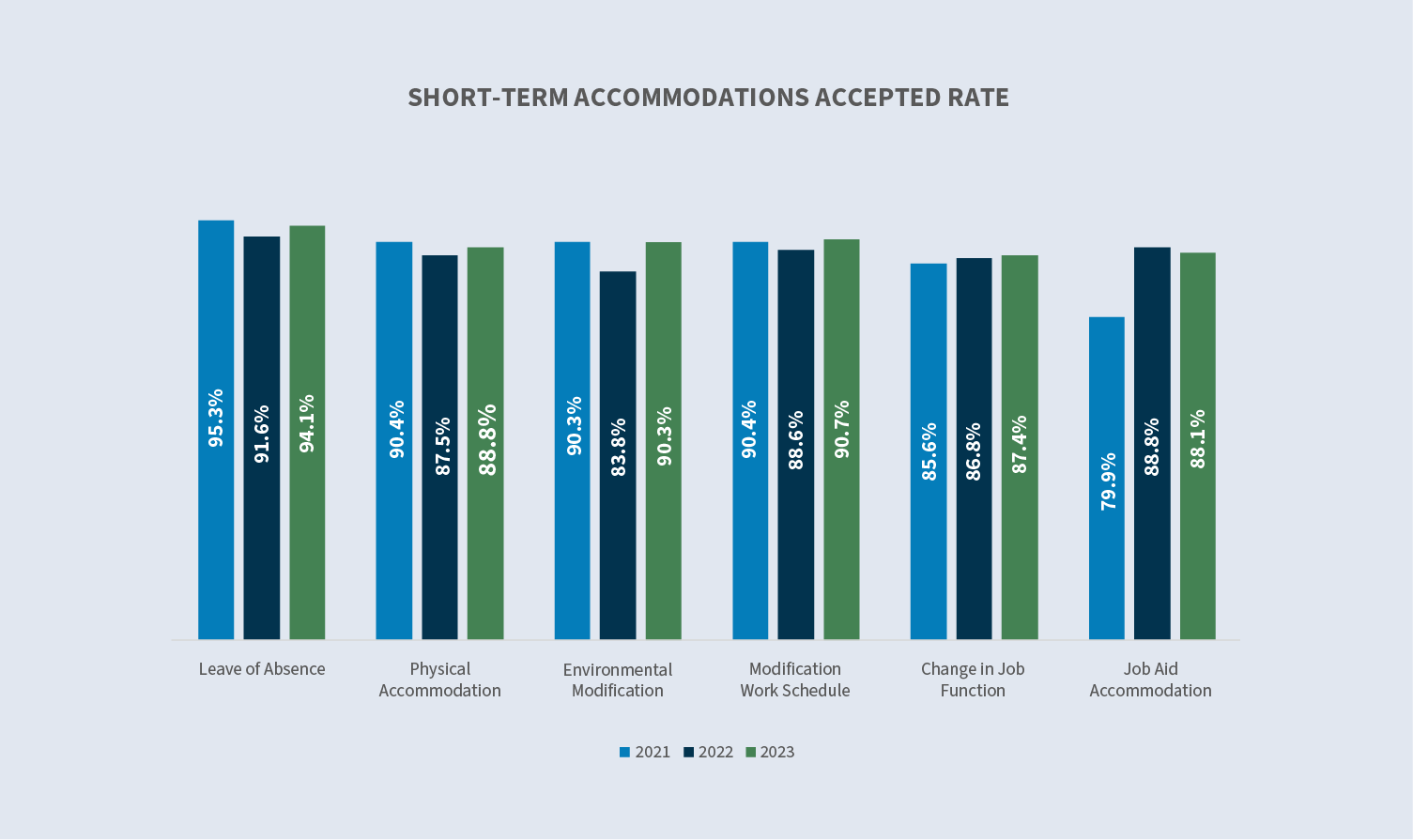
Accommodation durations
The amount of time accepted per unique accommodation has changed year-over-year. Continuous leave time has decreased 4.6% while intermittent leave time has increased by 6.8%. Overall, intermittent leave dipped during the pandemic and is just now starting to reach pre-pandemic levels.
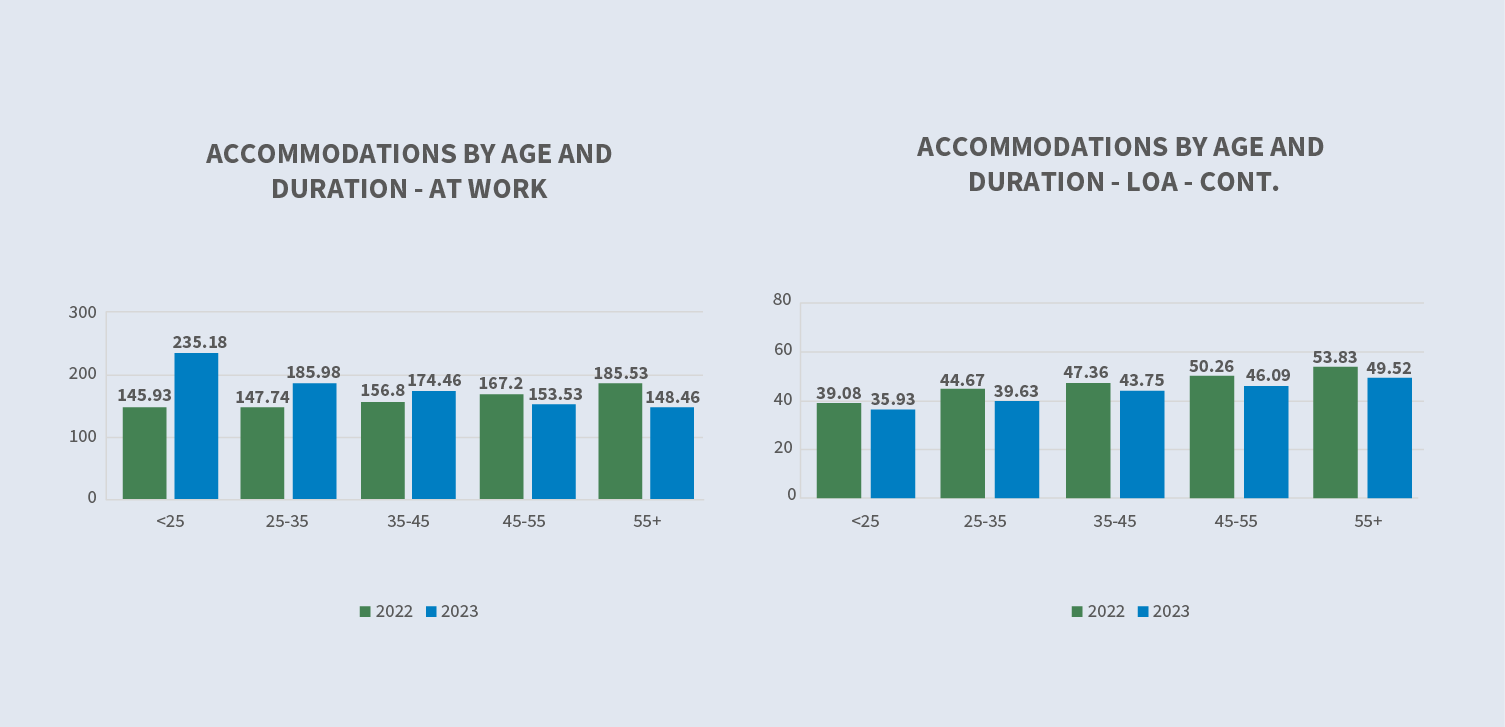
New accommodations by length of service
The amount of time accepted per unique accommodation has changed year-over-year. Continuous leave time has decreased 4.6% while intermittent leave time has increased by 6.8%. Overall, intermittent leave dipped during the pandemic and is just now starting to reach pre-pandemic levels.
This is reflected in the gradual increase of employees with one to three years of service — up to 33% in 2023.
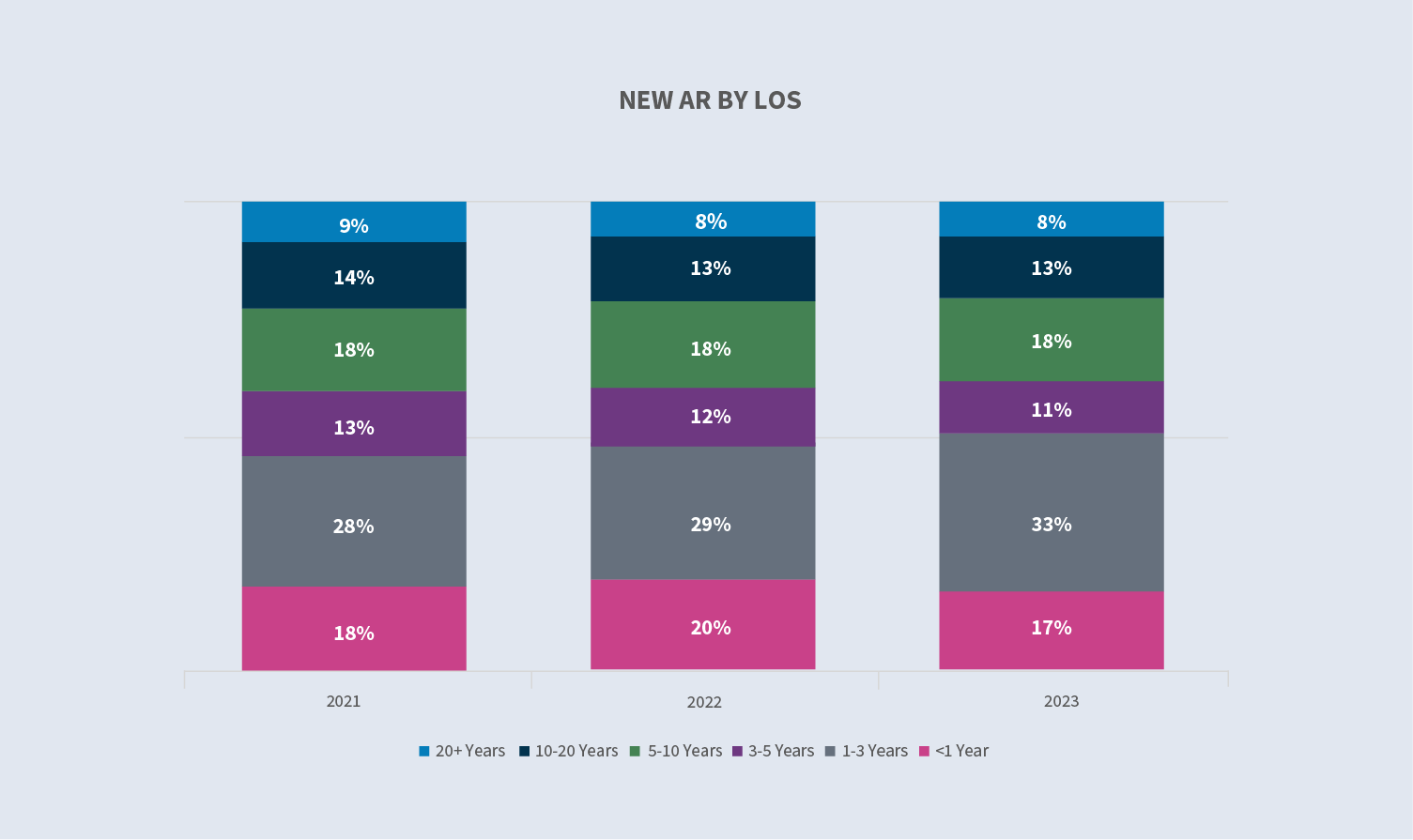
Future considerations
Working from home
Before the pandemic, the consensus in the courts was that it was at the discretion of the employer to decide if physical presence in the office was an essential function of most jobs and if remote work was a reasonable accommodation. Now, the interactive dialogue is paramount. After two years of teleworking, there will be questions about why employees with a disability cannot continue to do so as an accommodation. To justify hardship, an employer should be prepared to prove that, although remote work was required during the shutdown, it was not effective (e.g., problems with technology, decreased productivity, lost sales, etc.).

The Equal Employment Opportunity Commission (EEOC) recently announced that it settled its first case related to an Americans with Disability Act (ADA) accommodation related to COVID, and it involved work from home. Specifically, ISS Facility Services, Inc., a workplace experience and facility management company, will pay $47,500 and provide other relief to settle a disability discrimination and retaliation lawsuit. The lawsuit alleged that an employee at ISS requested an accommodation to work remotely two days per week and be allowed frequent breaks while working on-site, due to her pulmonary condition, which placed her at a greater risk of contracting COVID. Although ISS allowed other employees in her position to work from home, it denied her request and terminated her employment. While the agency’s announcement does not detail whether ISS engaged in a robust interactive dialogue, the events lead to a reasonable conclusion that ISS did not.
Litigation trends
2019 was the first time in the history of the ADA that disability charges were filed more frequently than any other type (e.g., race, color, religion, sex, national origin or age). Race had been the most common type of suit since statistics were kept. In 2021, that trend continued, and the gap between disability charges and other charges widened. Since then, the gap has not been widening but is sustaining.
This speaks to a couple of things:
1. There is a requirement to interactively dialogue. The swift increase in claims has occurred in the 15 years since the ADA was amended in 2008, and of course, it was in those amendments that Congress made clear that employers had to interactively dialogue with employees and find reasonable accommodations for them should they have an impairment.
2. Employees are becoming more familiar with their rights under the law.
While musculoskeletal, mental health and neurological disabilities are still the most cited impairments, it is thought that long-COVID may become the most cited disability in three to four years.
Federal legislation
The Pregnant Workers Fairness Act (PWFA) was signed into law by President Biden on Dec. 23, 2022. The PWFA became effective June 27, 2023, and creates requirements for any employer with 15 or more employees to provide accommodations for pregnancy-related conditions for their employees. One of the PWFA’s primary provisions is the obligation for employers to interactively dialogue with pregnant employees who request accommodations (similar to the ADA’s obligation).
